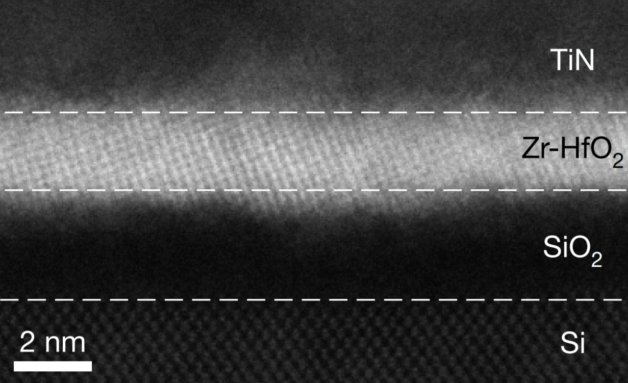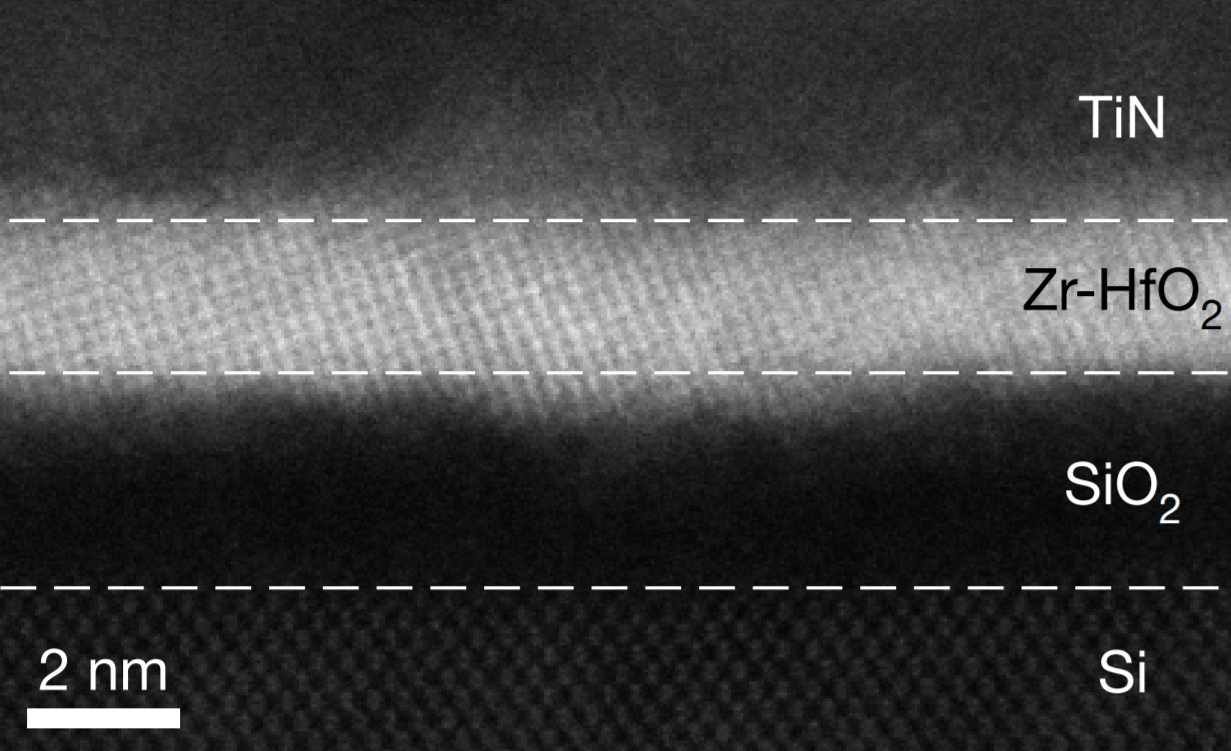
Researchers from Berkeley Lab and UC Berkeley grew a new type of ferroelectric – doped hafnium oxide, 1.8 nanometers thick – onto silicon. Not only did the ultrathin material demonstrate ferroelectricity, but the effect was actually stronger than the material several nanometers thicker. (Credit: Salahuddin et al./Berkeley Lab)
A team of researchers led by Sayeef Salahuddin, faculty scientist in Berkeley Lab’s Materials Sciences Division and professor of electrical engineering and computer sciences at UC Berkeley, has managed to grow onto silicon an ultrathin material that demonstrates a unique electrical property called ferroelectricity. Their findings were published in the journal Nature.
Ferroelectricity refers to a class of materials that can not only achieve spontaneous electric polarization, but also reverse the direction of polarization when exposed to an external electric field, which is promising for electronics.
Although researchers had previously stabilized ferroelectricity in ultrathin materials, past studies observed that ferroelectricity diminishes in conventional ferroelectric materials thinner than around 3 nanometers (3 billionths of a meter).
The Berkeley Lab-led team’s breakthrough reported in the current study demonstrates that ferroelectric effects can be enhanced in a material just 1 nanometer thick. As a result, the material – when engineered into a logical storage or switching device – can efficiently control the smallest devices with lower amounts of energy.
The finding could lead to the creation of more advanced batteries and sensors. But the work is “especially relevant to next-generation low-power microelectronics,” said co-author Jim Ciston, a staff scientist at the Molecular Foundry who led the electron microscopy portion of the project.
The material’s structural characteristics were confirmed using transmission electron microscopy at Berkeley Lab’s Molecular Foundry.
At Berkeley Lab’s Advanced Light Source, the researchers employed sophisticated X-ray absorption spectroscopy, X-ray linear dichroism, and photoemission electron microscopy techniques to explore the material’s structural and electronic origins of ferroelectricity.
In 2019, Ciston was one of 315 researchers selected to receive the prestigious Presidential Early Career Award for scientists and engineers, which partially funded his work on the study.
Adapted from a news release by Thomas Lee, UC Berkeley, School of Engineering
